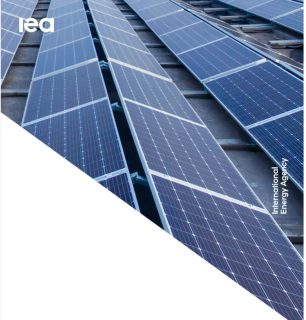-
IEA publishes Renewables 2025 report
Date posted:
-
-
Post Author
Tracey Biller
-
![]()
The International Energy Agency has published Renewables 2025, its main annual report on the sector. The report presents the latest forecasts and analysis, based on recent policy and market developments, while also exploring key challenges and opportunities facing the sector.
This year’s edition provides forecasts for the deployment of renewable energy technologies in electricity, transport and heat through 2030. It also examines notable developments in key areas of the sector, including policy changes, manufacturing trends, and the financial health of different parts of the industry.
The new report sees global renewable power capacity increasing by 4600 gigawatts (GW) by 2030 – roughly the equivalent of adding China, the European Union, and Japan’s total power generation capacity combined.
Solar PV will account for around 80% of the global increase in renewable power capacity over the next five years – driven by low costs and faster permitting timeframes – followed by wind, hydro, bioenergy, and geothermal. Geothermal installations are on course to hit historic highs in key markets, including the United States, Japan, Indonesia, and a host of emerging and developing economies. Rising grid integration challenges are renewing interest in pumped-storage hydropower, whose growth is expected to be almost 80% faster over the next five years compared with the previous five.
In emerging economies across Asia, the Middle East, and Africa, cost competitiveness and stronger policy support are spurring faster renewables growth, with many governments introducing new auction programmes and raising their targets. India is on course to become the second-largest renewables growth market globally, after China, and is expected to comfortably reach its ambitious target by 2030.
At the company level, confidence in renewables remains strong. Most major developers have either maintained or raised their 2030 deployment targets compared with last year, reflecting resilience and optimism in the sector. Offshore wind stands apart, however, with a weaker growth outlook – around a quarter lower than in last year’s report – resulting from policy changes in key markets, supply chain bottlenecks, and rising costs.
Solar PV is expected to dominate renewables’ growth between now and 2030, remaining the lowest-cost option for new generation in most countries, while wind power, despite its near-term challenges, is still set for considerable expansion as supply bottlenecks ease and projects move forward, notably in China, Europe, and India. Hydropower and other renewable technologies will continue to play important roles in supporting electricity systems and enhancing flexibility.
The role of renewables in transport and heating is expected to increase in the coming years, but only slightly. In the transport sector, their share of energy use is forecast to increase from 4% today to 6% in 2030, driven mainly by renewable electricity for EVs in China and Europe, with biofuels adding growth in Brazil, Indonesia, India, and other key markets. Renewables’ share of energy used globally to provide heat for buildings and industry is set to increase from 14% to 18% over the forecast period.

